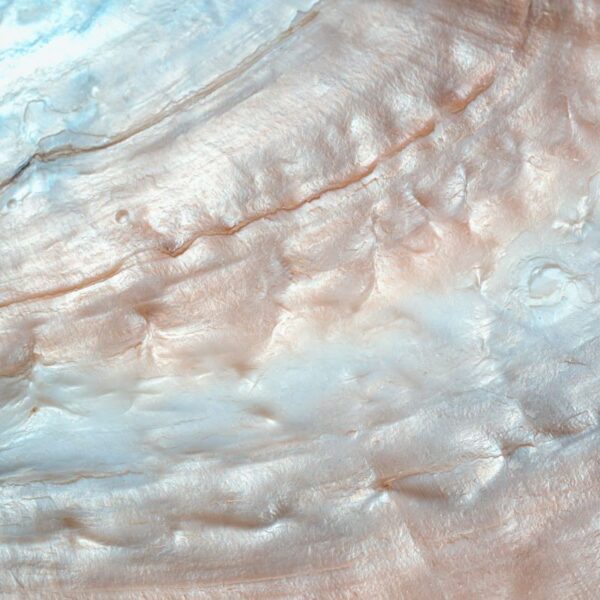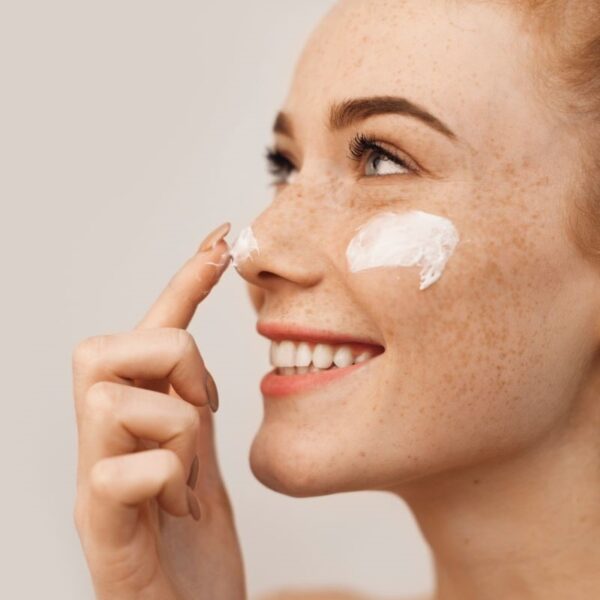One of the most significant challenges involved in formulating skin care and cosmetics is ensuring shelf life. No consumer wants to open a product to find mold or experience a product going “off” after a month or two of use. Product formulators are always on the hunt for effective and safe preservatives. Benzoic acid and its derivatives feature excellent antibacterial and antifungal properties, making them a popular preservative in the formulation of personal care products.
While some people have an allergy to benzoic acid, it’s generally well-tolerated when used topically in appropriate concentrations. However, most chemists recommend using it in combination with other preservatives for best performance.
What is Benzoic Acid?
Benzoic acid is a white, crystalline organic compound and member of the carboxylic acid family. Synonyms of benzoic acid include benzenecarboxylic acid, carboxybenzene, and benzoate. It’s widely used in the manufacture of various cosmetics, dyes, and plastics as well as in topical antifungals and insect repellants. The compound is also used as a food preservative since it effectively inhibits the growth of bacteria and molds in foods with an acidic pH value. This article will focus on the use of benzoic acid in personal care products.

How is benzoic acid produced?
Benzoic acid is found naturally in gum benzoin, a resin found in the bark of trees in the genus Styrax. However, most benzoic acid today is synthetically produced through the air oxidation of toluene, which avoids the problem of product contamination.
Benzoic acid vs. sodium benzoate
Sodium benzoate is a water-soluble salt obtained from benzoic acid. Although undissociated benzoic acid is more effective for preservation purposes, some product formulators prefer sodium benzoate since its water solubility is about 200 times higher than benzoic acid’s.
Benzoic Acid Applications in Personal Care Products
The properties of benzoic acid make it useful in skin care and cosmetic formulations in three specific ways. When these benefits are combined, benzoic acid is equipped to improve product quality.
Preservative
Benzoic acid, as well as its salts and esters, are used as preservatives in skin care and cosmetic products, with a maximum concentration of 0.5 %, (calculated as acid), as regulated by the EU Cosmetics directive 76/768/EEC.
pH Adjuster
As a product stabilizer, benzoic acid helps to regulate pH and protect the integrity of ingredients.
Moisture Retention Aid
Topical application of benzoic acid may play a role in reinforcing skin barrier function, thus promoting the skin’s ability to retain moisture.
Product Examples
Here are a few examples of Benzoic acid applications in skin care, hair care, and cosmetics products:
| Type | Examples |
|---|---|
| Hair Care | Shampoos, Conditioners, Styling Products |
| Body & Face Care | Cleansers, Hand Soaps, Toners, Gels, Lotions, Creams |
| Cosmetics | Foundations, Eyeliners, Mascaras, Powders, Wipes |
| Sun Products | Sunscreens, Suntans, Aftersuns |
| Bath Products | Shower Gels, Bubble Baths, and Intimate Wipes |
Properties of Benzoic Acid
| Appearance at 25 °C | White Crystals |
| pH (1% Aqueous) | 4 |
| Molar Mass | 122.12 g/mol |
| Viscosity, cps at 25°C | 60-75 |
| Solubility | Slightly soluble in water, Freely soluble in ethanol |
| Odor | Odorless or with a slight benzaldehyde odor |
| Melting Point | 122 ºC |
| Boiling Point | 249 ºC |
| Shelf Life | 24-36 months |
Typical Formulations
Shampoo
Here’s an example of how a shampoo product formulation table containing sodium hyaluronate:
| Phase | Trade Name | INCI Name | % Wt. |
|---|---|---|---|
| A | – Deionized Water – Hyaluronic Acid BT – Vegetable Glycerin – Glutange Grano – Rosmarin Glyceric extract – Natural Extract AP – Viscarin GP 209 | – Aqua – Sodium Hyaluronate – Glycerin – Hydrolyzed Wheat Protein – Rosmarinus officinalis Extract + Glycerine – Betaine – Chondrus crispus Extract Algae | 64.59 0.05 3.0 0.20 0.50 1.00 1.20 |
| B | Andean QD Ultra (25% Aq.Sol.) | Quillaja saponaria Extract+Aqua | 8.00 |
| C | Plantacare 818 UP | Coco Glucoside | 18.00 |
| D | Citric Acid | Citric Acid | 0.26 |
| E | – Phenoxyethanol – Benzoic Acid – Plantacare 818 UP | – Phenoxyethanol – Benzoic Acid – Coco Glucoside | 0.50 0.20 4.00 |
Benzoic Acid Formulation Considerations
- Benzoic acid is incompatible with oxidizers (chlorates, nitrates, peroxides, permanganates, perchlorates, chlorine, bromine, fluorine, etc.); contact may cause fires or explosions.
- It is not recommended to be used along with the extremely alkaline systems like Hair Color, Perming formulations
Formulators recommend a maximum concentration of:
- 2.5% for non-preservative purposes in cosmetic rinse-off products
- 1.7% in cosmetic oral-care products
- 0.5%in leave-on products
Acetic acid sometimes serves similar functions in personal care products, such as pH adjustment and microbial growth inhibition. However, benzoic acid (and its salts) is more commonly utilized as a preservative in this context.
Benzoic Acid Safety & Regulatory Considerations
- GRAS listed.
- Included in the FDA Inactive Ingredients Database (IM and IV injections, irrigation solutions, oral solutions, suspensions, syrups and tablets, rectal, topical, and vaginal preparations).
- Included in nonparenteral medicines licensed in the UK.
- Included in the Canadian List of Acceptable Non-medicinal Ingredients.
- While low concentrations of benzoic acid are considered non-toxic, and the Environmental Protection Agency classifies it as noncarcinogenic, significant exposure can cause a variety of health issues.
- The European Chemicals Agency has stated that benzoic acid causes damage to organs through prolonged or repeated exposure and can cause serious eye damage and skin irritation.
- Additionally, the National Oceanic and Atmospheric Administration has noted that benzoic acid has the potential for environmental damage if released. For this reason, benzoic acid should be stored in sealed containers in a cool, dry, and well-ventilated place, away from heat, any source of ignition, and all incompatible substances.
- Should be kept away from alkaline materials, strong bases, strong acids, oxoacids, epoxides, caustics, ammonia, amines, isocyanates.
- Certain states may require benzoic acid to be contained and disposed of as hazardous waste.
Identification Numbers
| CAS Number | 65-85-0 |
| EC Number | 200-618-2 |
Fun Facts About Benzoic Acid
- Benzoic acid was first described by Nostradamus in the 16th century as he explained the dry distillation of gum benzoin (a resin found in trees)
- Benzoic acid is commonly used to form the “snowflakes” in snow globes
- Benzoic acid occurs naturally in many plants
- In the early 20th century, benzoic acid was used as an analgesic and antiseptic






